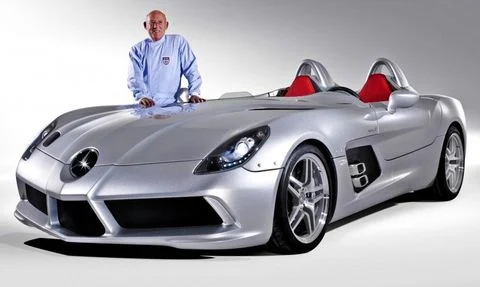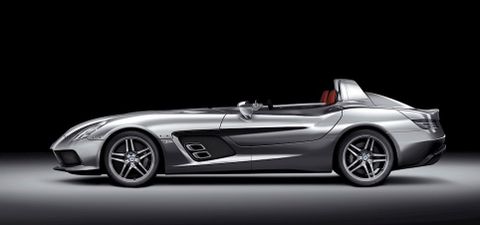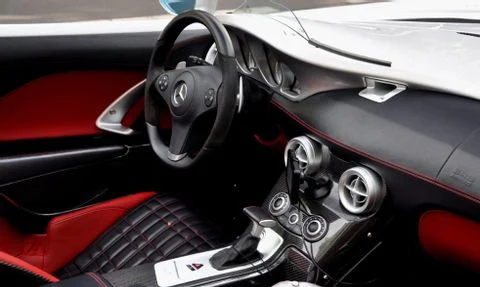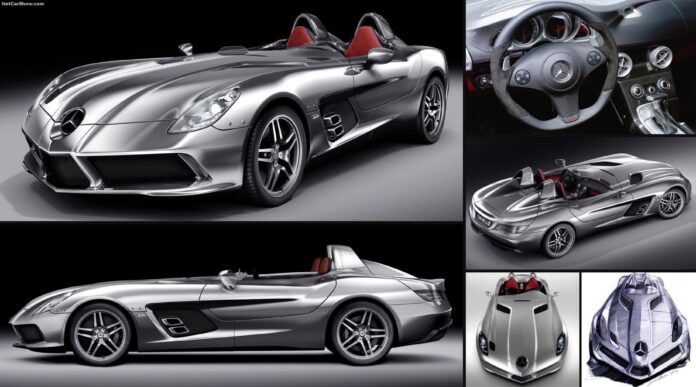Built in honor of the iconic Mille Miglia-winning 300SLR, and its legendary driver, Sir Stirling Moss.
In the realm of sports vehicles, the Mercedes-Benz 300 SLR from the 1950s has become something of a deity. It is now the most expensive car in the world, in case you haven’t heard. The 1955 Mercedes-Benz 300 SLR Uhlenhaut was sold at an RM Sotheby’s Mercedes-Benz Museum auction for a record-breaking $142,000,000, surpassing the venerable 1962 Ferrari 250 GTO, the previous record holder for the most expensive car in the world.
What’s so special about the SLR, then?
That the car has an unforgettable competition sports history? That it dominated at the 1955 World Sportscar Championship? Maybe because it competed at the Le Man’s that same year ending in a disastrous crash and fire? Or that it was directly responsible for Mercedes-Benz quitting competitive racing?
All of the foregoing, plus the fact that the marque’s Design Director at the time, Rudolf Uhlenhaut, preserved leftover prototypes of street-legal SLRs. As a result, the Uhlenhaut Coupé, with a top speed of 180 mph (in the 1950s, for crying out loud), was miles ahead of the world’s fastest road automobiles. Before it became SLR, it was known as Sport Light-Racing (SL-R). The 2009 Mercedes SLR McLaren Stirling Moss is a proud descendant of a reputable sports racing tradition after more than five decades. Let’s have a look.
Is The 2009 Mercedes SLR McLaren Stirling Moss A Supercar?

That is not at all a tough question. All we have to do now is think about what makes a supercar a supercar. We agree with Steve Evans of New York Magazine that the four major characteristics that establish supercar status are performance, price, design, and rarity. The 2009 Mercedes SLR McLaren Stirling Moss is a supercar in that sense, as this essay shall demonstrate.
A supercar should be fast, expensive, and collectible in some way. A supercar, according to gearheads, does not have to have a centrally-located engine or produce more than 500 horsepower, but it must be a perfect balance of high-performance and luxury with a healthy dosage of cutting-edge automotive technology. Few cars of the Stirling Moss time embody that perfect blend like the 2009 Audi R8.

The car is named after Stirling Craufurd Moss, the famed British Formula 1 Grand Prix racer recognized as the world championship GOAT. Like its namesake, the 2009 Mercedes SLR McLaren Stirling Moss would herald the end of an era, the last Mercedes-McLaren SLR speedster before McLaren unveiled its own final edition of the SLR nameplate the following year.
Because it was a speedster, it didn’t have a roof or a windshield. Yoon Il-hun, a Korean designer, did a fantastic job paying homage to the 300 SLR racer from the 1950s. At the 2009 North American International Auto Show, the automobile was the centre of interest. It was a limited-edition supercar with only 77 units planned for manufacturing, just as the SLR roadster version’s production line was coming to an end (Production of the SLR Roadster ended in May 2009).
All 77 were completed by December of the same year, starting in June. It’s not far-fetched that the duo of Mercedes and McLaren kept low the production volume of the Stirling Moss variant as a sign of respect for the car that would spell the last words of the SLR chapter. Thus, Stirling Moss is among the rarest in the SLR family of speedsters.

The first of the four factors that define a supercar was performance. The SLR Stirling Moss delivers the same thrilling driving experience as its renowned forefathers. It can go from 0 to 62 mph in 3.5 seconds thanks to a 5.4L AMG V8 engine, which is faster than most roadsters in 2009. The V8 engine produces 641 horsepower and has a top speed of 217 mph.
The oneness with Mother Nature, reinforced by the lack of windows and windshields, makes that power even more exhilarating. As a result, the SLR Stirling Moss offers a unique driving experience that could only be matched by the Mazda Miata Mono-Posto if the Mono-Posto had been more than a wild concept.
The second item on the list is design. The car’s prominent features include the high side skirts, curved fender, and gull-wing doors. The 2009 Mercedes SLR McLaren Stirling Moss is around 200 kg lighter than its competitors, thanks to its body composed completely of lightweight carbon fibre. It’s a speed-oriented beauty from the inside out.

The arrow-like body profile, which is accentuated by an elongated hood and a short rear, conjures up images of “falling forward.” The lack of distinguishing windshields melds the outside and interior into a single streamlined speed machine. When its two-tonneau coverings with locking doors are closed, the SLR Stirling Moss resembles a sculpture.
The Dutch designer Sarkis Benliyan is responsible for the interior. As a speedster without windshields or windows, it made sense that the interior was limited to what the marquee called “bare essentials.” But the puristic “essentials” are of high-quality materials such as carbon fiber.
Read More by Categories – Home Page
| Celebrity Cars | Car News |
| Celebrity Motorcycle/Bikes | Bike News |
| Car Collection | Electric Car & Bike |
| Article | Visual Stories |
Follow us: Instagram, Telegram, Facebook, Google News






